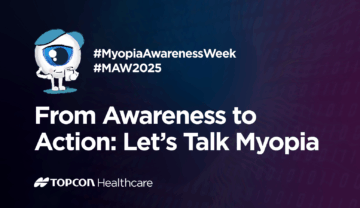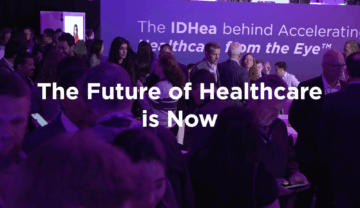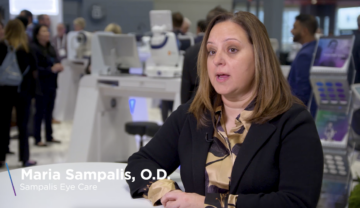ARVO 2024 Study on Multimodal Workflow for Ocular Health Screening
Introduction
At ARVO 2024, we proudly showcased cutting-edge research highlighting our team’s innovation and dedication to advancing ocular health screening. This study focuses on an efficient workflow combining three devices to screen for ocular diseases, including glaucoma, corneal, and retinal pathologies. Subjects were tested using a multimodal diagnostic prototype, a TEMPO/IMOvifa visual field analyzer, and a Maestro2 OCT with fundus camera. Workflow times were measured. Feedback on comfort and timing was also collected.
The results demonstrated that the average workflow duration was 09:16 minutes, with minimal differences between healthy and diseased eyes. Intraocular pressure remained within normal limits for all subjects, and feedback was uniformly positive. This streamlined workflow offers a practical solution for clinical and telehealth environments, ensuring timely and accurate detection of vision-threatening conditions.
Abstract Poster

Click image above to enlarge or view abstract on ARVO Website.
Purpose of the Research
Effective screening of vision-threatening diseases requires a comprehensive and dependable pretest workflow to enable accurate pathology detection. In this study, we aim to demonstrate that a workflow consisting of three devices can offer a wide array of screening capabilities and supplement growing telehealth needs in optometry and ophthalmology practices.
Enhancing Ocular Health Screening
This research highlights the efficiency of a multimodal workflow in screening for ocular diseases, offering a comprehensive solution for both clinical and telehealth settings. By integrating multiple diagnostic devices, the study demonstrates how streamlined testing can provide accurate and timely results, regardless of the patient’s ocular health status. This approach supports clinicians in delivering faster, more reliable diagnoses, reinforcing Topcon’s dedication to advancing eye care through innovation and cutting-edge technology.
Meet the authors: Juan Arias, BS

Juan Arias, BS, is the lead researcher on this collaborative project at Topcon Healthcare, working alongside a talented team to push the boundaries of ocular health screening technology. While Juan led the study, this effort was a cross-collaborative initiative that included key contributions from several Topcon experts, such as Mary Durbin, PhD, VP of Clinical Science. Together, their combined expertise has driven innovations in multimodal workflows, ensuring that healthcare professionals can access the most advanced diagnostic tools to enhance patient outcomes and the quality of eye care.
A Modern Workflow Approach to Screen Ocular Health and Disease
Authors: Juan Arias, Mary K. Durbin, Ece Turhal, Susan Su, Nevin W. El-Nimri
Purpose: Effective screening of vision-threatening diseases requires a comprehensive and dependable pretest workflow to enable accurate pathology detection. In this study, we aim to demonstrate that a workflow consisting of three devices can offer a wide array of screening capabilities and supplement growing telehealth needs in optometry and ophthalmology practices.
Methods: This study was prospective in nature and all measurements were taken at a single site.
A mixed cohort of subjects with healthy eyes and eyes with glaucoma, corneal, or retinal pathologies were included in the study. All subjects were naïve to the devices and were referred by a primary eye care clinic.
The test sequence commenced with a novel multimodal diagnostic prototype capable of capturing non-contact tonometry (NCT), objective refraction and keratometry followed by a TEMPO/IMOvifa visual field (VF) analyzer (Topcon Healthcare/CREWT Medical Systems, Tokyo, Japan) 28-point screening test and a 3D Wide optical coherence tomography (OCT) scan on a Maestro2 (Topcon Healthcare, Tokyo, Japan). A stopwatch recorded the duration of the imaging workflow from start to finish. None of the devices were proactively set up with subject information prior to testing. All subjects were queried about their comfort and the timing of the process.
Results: Ten subjects (20 eyes) were imaged and had their data analyzed. There were no subjects excluded from analysis. The youngest participant was twenty-two years of age and the oldest was seventy-three. The mean IOP (±SD, mmHg) (OD = 16 ± 2.41, OS = 18 ± 3.96) was within normal limit.
The mean testing time of the complete workflow was 09:16 minutes/seconds (m/s) (95% CI = 6:50 m/s – 11:41 m/s) (multimodal device = 02:08 m/s, VF = 05:50 m/s (02:55 m/s per eye), OCT = 01:32 m/s). The maximum time was 11:35 m/s (pathology) and the minimum was 6:44 m/s (healthy). Mean testing time for healthy subjects was 08:50 m/s, while those with pathology had an average testing time of 10:16 m/s. All feedback regarding the testing duration and comfort was positive.
Conclusions: The evaluated pretest workflow is an efficient and accurate set of modalities which would facilitate both clinical and telehealth needs. The minimal time difference between testing a healthy and a diseased eye supports its effectiveness in diverse clinical environments.
This abstract was presented at the 2024 ARVO Annual Meeting, held in Seattle, WA, May 5-9, 2024.
Link to abstract on ARVO Website.




